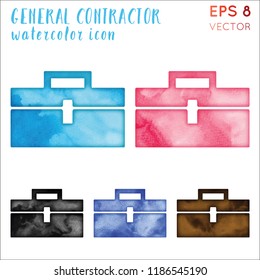Comprehending The Differences Between Interior And Exterior Paint: Secret Features And Uses
Comprehending The Differences Between Interior And Exterior Paint: Secret Features And Uses
Blog Article
Produced By-Hastings Bernstein
When you're picking between interior and exterior paint, it's important to understand their basic distinctions that affect both efficiency and looks. Inside paints are crafted for reduced VOC levels and smoother surfaces, making them suitable for indoor rooms, while exterior paints are developed to sustain harsh climate condition and UV direct exposure. Each type offers a distinctive objective, however recognizing when to utilize one over the various other can greatly influence your project's result. So, what variables should you consider when making your selection?
Composition and Formulation
When picking in between exterior and interior paint, understanding their composition and formulation is essential. Interior paints usually have a lower amount of unstable natural substances (VOCs), making them safer for indoor air quality. You'll see they often have a smoother finish, which improves their capacity to withstand discolorations and enables less complicated cleaning. They're created to stand up to the roughness of interior environments, consisting of varying humidity levels and temperature fluctuations.
On click the up coming webpage , outside paints are formulated to endure harsher conditions. They typically contain higher levels of pigments and ingredients to resist fading from UV rays, as well as to prevent mildew and mold development. Their composition includes a lot more binders and resins, which offer far better attachment to surface areas revealed to the components. This ensures the paint can hold up against rain, snow, and rising and fall temperatures without peeling or cracking.
Efficiency and Resilience
Evaluating efficiency and resilience is vital when selecting in between exterior and interior paint. Inside paint is created for surfaces that experience much less wear and tear. It commonly resists fading and scuffing, making it suitable for living spaces and bedrooms. Nonetheless, it might not stand up well in high-moisture areas like kitchens and bathrooms without correct formulation.
On the other hand, exterior paint encounters harsher problems. It's crafted to endure UV rays, rainfall, and temperature changes. This type of paint commonly has ingredients that stop mold and mildew and mildew growth, making sure longevity in various environments. When you use exterior paint, you can expect it to last a number of years longer than indoor paint, provided it's applied properly.
One more key difference lies in the finish choices. Interior paints frequently have a variety of coatings for aesthetic charm, while exterior paints focus on durability over shine. If you're looking for something that can handle the components, exterior paint is your best bet.
On the other hand, if you're focused on indoor visual appeals with much less worry for extreme conditions, interior paint might be suitable. Inevitably, your choice should line up with the particular demands of the setting.
Aesthetic Considerations
A fresh coat of paint can change an area, yet visual considerations play a crucial function in your choice in between exterior and interior alternatives. When you're picking paint, think about the state of mind you wish to create. Interior paint enables you to discover a larger variety of colors and finishes, allowing you to express your personal style and enhance your home's setting. Whether you opt for soft pastels or strong shades, the ideal interior paint can make your rooms feel comfy, vibrant, or peaceful.
On the other hand, exterior paint requires to line up with your home's design and the surrounding environment. Here, you're not just making a style declaration; you're also taking into consideration curb appeal. Selecting shades that balance with your community can improve your home's worth and visual appeal. Bear in mind that exterior paint is also subject to fading and weather condition modifications, so selecting a classic color can conserve you from frequent repainting.
Inevitably, consider exactly how each option fits your vision. By straightening your paint selection with your wanted aesthetic, you can produce areas that show your personality while preserving capability.
Final thought
When it comes to picking paint, recognizing the vital distinctions in between interior and exterior choices is important. Interior paints concentrate on aesthetics and low VOCs, making them ideal for enhancing your indoor spaces. In contrast, exterior paints are designed for durability and weather condition resistance, shielding your home from the aspects. By considering your certain needs and the setting, you can confidently pick the ideal paint to achieve the appearance and long life you desire for your space.
